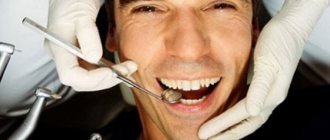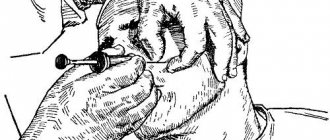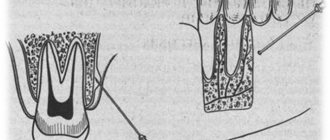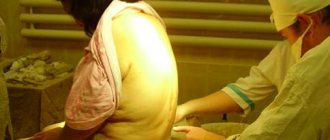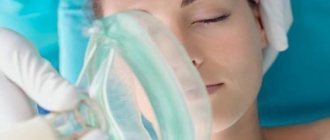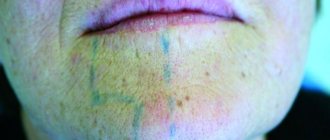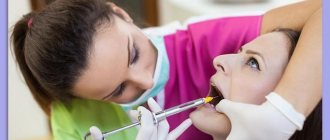This article provides a detailed step-by-step description of anesthesia techniques using the STA (Single Tooth Anesthesia) system from Milestone Scientific (USA).
This article provides a detailed step-by-step description of the methods of anesthesia using the STA system (Single Tooth Anesthesia – anesthesia in the field of a single tooth), the company Milestone Scientific (USA).
The history of local anesthesia in dentistry goes back more than 150 years. However, it took decades for dentists to move from the Dr. Luer syringe and Novocaine to a disposable syringe with needles of different sizes and a solution of lidocaine as an anesthetic. It took several more decades to switch to the use of carpule syringes and carpule forms of anesthetics. However, despite all the innovations, the doctor was still limited to two traditional methods of pain relief: infiltration and conduction. The method of intraosseous anesthesia developed in recent years actually turned out to be quite traumatic and risky, since the anesthetic solution could enter the bloodstream, causing various complications, especially in patients at risk. Even intraligamentary anesthesia could not become a full-fledged replacement for mandibular anesthesia due to the short duration of pain relief, the complexity of implementation and the high incidence of side effects, such as injection pain, postoperative discomfort, soft tissue damage and bone resorption. All these side effects are mostly associated with the inability to control the speed of supply of the anesthetic solution, the accuracy of its administration and the pressure created in the tissues.
In recent years, computer technologies for supplying anesthetic solution have been increasingly developed. The ability to control the feed rate, which does not exceed the patient's pain threshold, the pressure created in the tissues and the position of the needle in the tissues, makes computer-controlled anesthesia the technique of choice in everyday dental practice. Modified intraligamentary anesthesia has made it possible to abandon conduction techniques in almost all clinical situations, thanks to the ability to accurately, computer-controlled injection of more anesthetic (which increases the duration of anesthesia) with minimal pressure (which reduces the number of postoperative complications) and low delivery speed (which makes the procedure virtually painless).
This article provides a detailed step-by-step description of anesthesia techniques using the STA (Single Tooth Anesthesia) system from Milestone Scientific (USA).
Milestone Scientific has developed a pre-injection technique that is highly recommended when using the STA System. The technique consists of three stages:
- Puncture
- preliminary anesthesia according to the type of topical anesthesia by pressing the cut of the needle with the tip of a cotton swab to the surface of the tissue with the supply of an anesthetic solution - Penetration
- slow two-way rotation of the needle as it moves through the tissue until it reaches the injection site - Injection of a standard amount of anesthetic solution
at a constant rate not exceeding the patient's pain threshold
This method provides a virtually painless injection for every patient.
All stages are easy to use and differ slightly from traditional techniques, however, the doctor is freed from the need to independently control the rate of anesthetic supply and pressure in the tissues - this function is performed by a computer, which greatly facilitates the procedure and makes it simpler and more predictable.
Infiltration anesthesia
- Press the bevel of a 30G 1″ or 30G 1/2″ needle against the mucous membrane at the injection site and apply pressure using a cotton swab.
- Deliver anesthetic at a ControlFloTM rate of 8–9 sec.
- Slowly rotate the needle to pierce the first layer of soft tissue.
- Slowly advance the needle until the anesthetic injection site is reached.
- Once the needle reaches the site of injection of the anesthetic, perform an aspiration test. If blood is observed in the tip, reposition the needle and repeat the aspiration test.
- If the aspiration test is negative, continue injecting anesthetic at the ControlFloTM rate for 5 to 6 seconds, then change to the RapidFloTM rate and inject the usual amount of local anesthetic as if using a traditional carpule syringe.
- After injecting the recommended amount of anesthetic solution, wait 5-6 seconds and slowly remove the needle, trying to avoid any drops of anesthetic getting into the patient’s mouth.
- The effect occurs much faster than when using a traditional carpule syringe.
Differences between intraligamentary STA-modified anesthesia and traditional techniques
The following are the main differences between the traditional intraligamentary anesthesia technique performed using the Ligmaject syringe and the STA-modified technique.
– The traditional technique is essentially the “last hope” when mandibular anesthesia is ineffective.
In turn, the STA-modified technique is the main method of anesthetizing any teeth in the upper and lower jaws, and can be a complete replacement for mandibular and infiltration anesthesia, accompanied by collateral numbness of the patient’s lip, tongue and facial skin. – With the traditional method of intraligamentary anesthesia, carried out using a syringe, a small amount of anesthetic is injected under high pressure, resulting in a short duration of pain relief.
With the STA-modified technique, a larger amount of anesthetic is injected with minimal pressure, which provides longer anesthesia - up to 40 minutes.
– The traditional technique of intraligamentary anesthesia is difficult to perform, since the tissues in this area are highly dense, and the speed of administration of the anesthetic depends on the force applied by the dentist (which may differ from one doctor to another).
The STA-modified technique is very simple, since the doctor simply advances the bevel of the needle in the gingival sulcus along the tooth root until resistance is felt. The rate of anesthetic delivery is controlled by a computer, so it is constant and does not exceed the patient’s pain threshold.
The dentist can always monitor the correct placement of the needle during the injection process using the feedback provided by the STA device through visual and audio signals.
– The traditional technique of intraligamentary anesthesia is painful for the patient and often leads to soft tissue damage and bone resorption, which results in postoperative discomfort. The STA-modified technique is absolutely painless: clinical studies have shown that it does not cause soft tissue damage or bone resorption, and discomfort after its use is minimal or completely absent.
– STA, through the use of dynamic pressure control technology, allows the dentist to constantly monitor the procedure of intraligamentary anesthesia to achieve a successful result.
In this case, the operator constantly receives messages about reaching the injection site (the area of the circular ligament), changing the position of the needle, its mechanical blocking or excessive pressure.
Anesthesia of the anterior and middle superior alveolar nerve
- Place a 30G 1/2″ needle at the injection site, centered between the midpalatal suture and the free edge of the gum on a line drawn between the premolars.
- Press the bevel of the needle against the mucous membrane and press on it with a cotton swab.
- Deliver anesthetic at a ControlFloTM rate of 8–9 sec.
- Slowly rotate the needle left and right to penetrate the first layer of soft tissue.
- Slowly advance the needle while continuing to rotate it.
- Once bone contact is achieved, position the needle at a 90° angle to the premolars and perform an aspiration test.
- If blood is observed in the tip, reposition the needle and repeat the aspiration test.
- If the aspiration test is negative, continue injecting anesthetic at the ControlFloTM rate. Inject the usual amount of local anesthetic as if using a traditional carpule syringe: when using 4% articaine with 1:200,000 epinephrine, the recommended dosage for adults is approximately 1/3 to 1/2 a carpule.
- After injecting the required volume of anesthetic, wait 6 s and slowly withdraw the needle using a bilateral rotation technique, taking care to avoid dripping anesthetic into the patient's mouth (Fig. 1).
The area of anesthesia extends from the medial buccal root of the first molar to the central incisor, including the palatal tissue in this quadrant.
Rice. 1
AMSA (Anterior Middle Superior Alveolar) technique
Technique of intraligamentary anesthesia:
first, the dental-gingival pocket and tooth surface are treated with antiseptics - 0.05% solution of chlorhexidine digluconate or 1% iodine solution. 1. The needle is placed at an angle of 30° to the vertical axis of the tooth, the cut of the needle is directed towards the tooth, with less trauma to the periodontium. The question of how to correctly position the needle cut remains debatable (Fig. 62).
Rice. 62 A. Intraperiodontal (intraligamentary) anesthesia (scheme). 1 - enamel, 2 - dentin, 3 - pulp, 4 - cement, 5 - periodontium, 6 - alveolar bone, 7 - apex of the tooth, 8 - gingival pocket
Rice. 62 B. Intraligamentary anesthesia
2. The needle is inserted into the gum pocket, bringing it as close as possible to the neck of the tooth. 3. The needle is advanced into the gingival pocket to a depth of 1-2 mm, but not more than 3 mm, until it is securely fixed in the periodontal tissues. It is not recommended to use significant force when advancing the needle. 4. When using a special carpule injector, by moving the lever or rotating the wheel, an average of 0.2 ml of anesthetic solution is injected into the periodontium under pressure. The solution is injected slowly (20-25 s) and carefully, carefully controlling the efforts made to overcome the resistance of periodontal tissues. It is not recommended to inject more than 0.2 ml of anesthetic solution into the periodontium. 5. In order to prevent complications, the anesthetic solution is injected into the periodontium carefully, without creating excessive pressure on the tissue. If resistance cannot be overcome, an intraperiodontal injection must be performed in another location. 6. With proper intraligamentary anesthesia, an ischemic zone appears around the causative tooth. It should be noted that deep advancement of the needle (2-3 mm) into the periodontium is unpleasant and painful.
How to carry out intraligamentary anesthesia comfortably (painlessly) for the patient : - after antiseptic treatment, numb the needle injection site with application anesthesia (10% lidocaine solution, etc.); — the needle is inserted into the gingival pocket and advanced 1 mm, then a small amount of anesthetic solution (0.05-0.1 ml) is poured in to numb the periodontium at the site of further needle insertion. After 30 s, the needle is advanced another 2-3 mm until it is securely fixed in the tissues, and an intraligamentary injection is performed; — a needle is inserted into the dental gum at an angle of 45° (at the point of projection of the needle tip) and 0.2 ml of anesthetic is injected. Wait for the appearance of an ischemic zone at the injection site and after 60 s intraligamentary anesthesia is performed. Types of anesthesia 1. When anesthetizing cervical caries in the case of a carious cavity located on the vestibular side, one injection is also performed on the vestibular side. At least 0.2 ml of anesthetic is injected into the periodontium. 2. When treating pulpitis and removing teeth in the upper jaw, one injection is carried out for incisors, canines, premolars on the vestibular and palatal sides, for anesthesia of molars - 2 injections are carried out on the vestibular side near each medial and distal roots, on the palatal side - 1 injection . Another additional injection is carried out at the root branching site. On average, 4 injections are performed to anesthetize molars; 0.2 ml of anesthetic is injected into the periodontium of each root (Fig. 63). 3. When anesthetizing the teeth of the lower jaw, one injection is made into the interdental spaces (into the periodontium) on the medial and distal sides of the tooth root (Fig. 63, B) and one additional injection in the bifurcation area. To anesthetize lower molars, an average of 3-4 injections are performed. Note. A number of authors recommend other points for introducing anesthetic into the periodontium (Fig. 63, B). The effectiveness of anesthesia for the central group of teeth is 4-5 points, for molars - 3-4 points on a scale and depends on the length of the tooth root and the number of roots in multi-rooted teeth: teeth with a long root (canines) are less anesthetized than incisors, molars are more difficult to anesthetize than single-rooted teeth. If pain relief is ineffective, additional infiltration or conduction anesthesia is performed. Conclusion : a good analgesic effect can only be achieved with high skill and professionalism when performing intraligamentary anesthesia. We recommend that for each tooth subject to anesthesia, based on examination, clinical and radiological data, create an information card for optimal planning of anesthesia, taking into account the condition of the periodontal tissues surrounding the tooth - both the main (intraligamentary) and, if necessary, additional methods of anesthesia. A map is made before the intervention, indicating the expected result, and after anesthesia, its effectiveness is assessed. COMPLICATIONS : acute periodontitis may occur when plaque is pushed into the periodontium. Sometimes there is a periodontal reaction to needle trauma to the periodontium (pain when biting, which goes away after 2-3 days).
Rice. 63. Place of needle insertion for ictraligamentary anesthesia of various groups of teeth : A - central incisor - the needle is inserted into the periodontal ligament from the vestibular and palatal side with a cut to the root surface; B - central incisor - from the vestibular side (for pain relief during the treatment of caries). C, D—of the second molar on the upper jaw, a needle is inserted into the periodontal shell of the vestibular side near each root (C—front view, D—side view (injection from the palatal side)), D—of the first lower molar. The needle is inserted into the periodontal ligament, under the dental papilla near the mesial and distal surfaces of the tooth roots. E - injection points for intraligamentary anesthesia (according to W.Zugal, L.Tanbenheim, 2002). Injection points fit tightly to the neck of the tooth
To prevent traumatic periodontitis, it is recommended : - carefully advance the needle into the periodontal tissue, without using excessive force, to a depth of 3 mm; - slowly and carefully inject the anesthetic solution into the periodontium - no more than 0.2 ml for each tooth root. In connection with the above complications, intraligamentary anesthesia is advisable to use when removing teeth. In this case, there is no feeling of an “overgrown tooth”, acute periodontitis, etc.
Anesthesia in the area of the incisive foramen
- If desired, apply topical anesthesia to the incisive papilla.
- Press the bevel of a 30G 1/2″ needle against the gingival papilla perpendicular to its direction using a Q-tip.
- Deliver anesthetic at a ControlFloTM rate of 8–9 sec.
- Slowly rotate the needle to penetrate the gingival papilla.
- Hold the needle in place for 5 to 6 seconds while continuing to inject anesthetic at the ControlFloTM rate. Wait until the gingival papilla turns white.
- Place the needle vertically to improve its penetration into the nasopalatine canal.
- Continuing to slowly rotate the needle left and right 180°, advance it into the nasopalatine canal. Make stops as you advance the needle so that the anesthetic solution always advances in front of the needle tip.
- Upon reaching the inner bone wall of the nasopalatine canal, withdraw the tip back 1 mm and perform an aspiration test. If the aspiration test is positive, reposition the needle slightly.
- If the aspiration test is negative, maintain needle position and inject 1/3 to 1/2 carpule of 4% articaine with 1:200,000 epinephrine at ControlFloTM rate.
- Stop the anesthetic injection, wait 6 s and slowly remove the needle, being careful to avoid dripping anesthetic into the patient's mouth (Fig. 2).
The area of anesthesia extends from canine to canine of the upper jaw, including the tissues of the palate.
Rice. 2
PASA (Palatal Anterior Superior Alveolar) technique
Anesthesia in dentistry: types and principle of action
Anesthesia is a decrease in sensitivity or complete cessation of the perception of pain by disrupting the transmission of sensitive nerve impulses at different levels.
Methods of anesthesia for tooth extraction:
- superficial (other names - terminal, application) - blockade of receptors of nerve endings;
- infiltration - shutdown of receptors and small nerves;
- conduction (regional) - blockade of nerve trunks and plexuses,
- intraligamentary (intraligamentous) - anesthesia of the periodontal cavity and intraosseous space;
- sedation with nitrous oxide - inhalation anesthesia with laughing gas, in small concentrations maintains consciousness, but causes relaxation;
- mask anesthesia - a gaseous anesthetic enters the body through the respiratory tract when the mixture is inhaled;
- Propofol sedation is an intravenous injection of an anesthetic that temporarily turns off consciousness.
Tooth extraction under general anesthesia in Moscow is the most expensive type of anesthesia. The cost depends on the anesthetic and how long it lasts.
Application anesthesia
An anesthetic is applied to the surface of the gum surrounding the tooth. Use sprays and gels containing lidocaine. This technique slightly reduces pain sensitivity. Anesthesia occurs in 3–5 minutes and lasts 10–15 minutes. They are used more often in pediatric dentistry to remove baby teeth and numb the area for needle insertion.
Infiltration anesthesia
This is an injection of an anesthetic into the soft tissue of the gums. Lidocaine and ultracaine are most often used. The most common type of anesthesia for the removal of anterior teeth. Reduces pain sensitivity for an average of an hour. Not an effective method for removing chewing teeth.
Conduction anesthesia
The anesthetic is injected with a syringe into the area of the branches of the trigeminal nerve, which provide sensitivity to the gums and teeth. The drug takes effect a few minutes after the injection, and the numbness persists for another two hours. Used for complex surgical interventions on the gums and molars.
Intraligamentary anesthesia
This is pain relief by injecting an anesthetic between the tooth and gum. With this method of administration, a significantly smaller amount of the drug is consumed, which is especially important for patients with diseases of the cardiovascular system.
Nitrous oxide sedation
The disturbance of consciousness is superficial. Nitrous oxide is administered intranasally (sprayed into the nasal cavity). After stopping the administration, the effect of the drug ends, the condition and reactions stabilize.
The technique allows you to reduce the level of fear and anxiety. More often performed on patients with high anxiety, during traumatic and lengthy dental procedures.
Mask anesthesia
The anesthetic is administered through an inhalation mask. The drug and its dosage are determined individually, taking into account the age and condition of the patient. The dose is adjusted using a special evaporator. Consciousness is restored a few minutes after stopping the supply of the anesthetic drug, the general condition returns to normal within two hours.
Sedation with propofol
Propofol is a short-acting sleeping pill that is administered intravenously. The patient is instantly immersed in a medicated sleep, similar to physiological sleep. The drug is non-toxic, quickly eliminated from the body, and can be used for patients with heart, liver, and kidney diseases. Children are allowed from the age of three.
Such anesthesia is justified for a large volume of treatment, dental phobia, diseases of the central nervous system, which are accompanied by an intellectual disorder.
Mandibular anesthesia
Press the bevel of a 27G 11/4″ needle against the mucosa at the injection site and apply pressure using a Q-tip.
- Deliver anesthetic at a ControlFloTM rate of 8–9 sec.
- Slowly rotate the needle to pierce the first layer of soft tissue.
- Using a bilateral rotation technique (rotating the needle left and right up to 180° to prevent deflection during penetration), slowly advance the needle until it reaches the anesthetic injection site while delivering the solution at ControlFloTM speed.
- Once the needle reaches the injection site, perform an aspiration test (release the pedal or, if the cruise control function is activated, press the pedal) to ensure that the tip of the needle is not in the lumen of a large blood vessel. If blood is observed in the tip, reposition the needle and repeat the aspiration test.
- If the aspiration test is negative, continue injecting anesthetic at the ControlFloTM rate for 5 to 6 seconds, then change to the RapidFloTM rate and inject the usual amount of local anesthetic as if using a traditional carpule syringe.
- After injecting the recommended amount of anesthetic solution, wait 5-6 seconds and slowly withdraw the needle using a bilateral rotation technique, trying to avoid dripping the anesthetic into the patient's mouth (Fig. 3).
If repeat injection is necessary, TurboFloTM speed can be used.
Rice. 3
Mandibular anesthesia
Types of anesthetics and injectors
For intraligamentous anesthesia, special carpule syringes are used. A wide range of models are available in dentistry, but they all meet standard criteria, which include:
- Maintaining high blood pressure during injection;
- The presence in the structure of a special liquid drainage system;
- Equipped with a rotary or angled attachment that changes the inclination of the needle.
In addition, a prerequisite is the use of materials that are resistant to sterilization procedures, ease and ease of use.
Among the popular models of carpule syringes are:
- STERINJECT and PERI-PRESS are cross-shaped products that include a latch for simultaneous fixation with four fingers. Application of muscle force allows 0.2 ml of anesthetic to be injected with each lever press;
- CITOJECT – models similar in shape to a standard fountain pen. The presence of a piston element and a comb ensures the introduction of 0.3 ml of the composition during injection;
- PAROJECT – hollow small-sized cylindrical syringes, made of metal, and delivering up to 0.6 ml of solution per press.
In addition, other models are also popular among dentists, including the Russian development IS-01-1-Mid, which is distinguished by its rotating head design.
Anesthetics used for pain relief belong to the category of capsule formulations with local action. A standard ampoule contains 1.8 ml of a solution containing an amide anesthetic and a vasoconstrictor.
When anesthesia is not used:
Contraindications to general anesthesia in dentistry are divided into relative and absolute. The first category includes exacerbation of chronic diseases, infectious diseases (Flu, herpes virus infection, etc.), pregnancy.
Anesthesia is absolutely contraindicated in the following cases:
- heart failure;
- serious kidney and liver diseases;
- endocrine disorders;
- respiratory problems, etc.
Therefore, preparation for general anesthesia is more serious: you will first need to undergo a comprehensive examination and consult with a general practitioner to assess your health and readiness for such a procedure.
